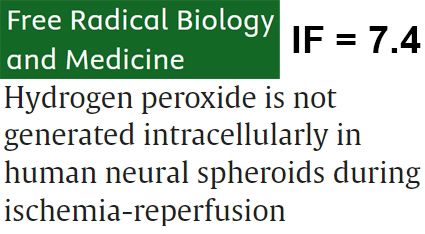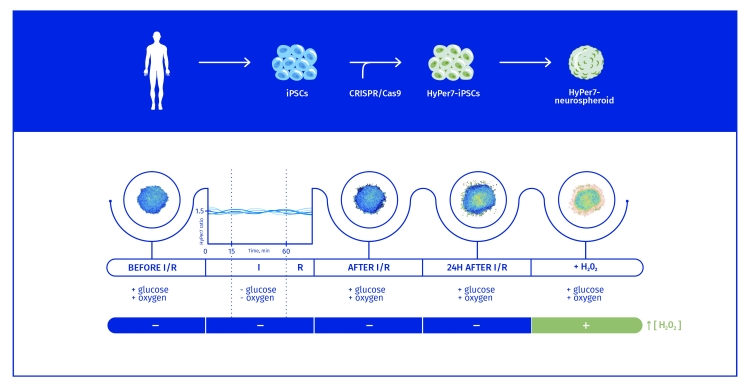Press-room / news / Science news /
Hydrogen peroxide is not generated intracellularly in human neural spheroids during ischemia-reperfusion
Reactive oxygen species (ROS) are considered a primary source of damage during an ischemic stroke. Studies on this subject are usually performed on either cell culture or animal models, which can make it difficult to translate the results to humans. Currently, 3D neurospheroids derived from induced pluripotent stem cells (iPSCs) are proposed as an optimal alternative for modeling disease conditions.

, Mishina NM, , Ivanenko AV, , , Sokolov RA, , , , Belousov VV
Researchers from the IBCh RAS and other Russian institutions report live imaging of hydrogen peroxide dynamics during the acute phase of hypoxia and reperfusion in human iPSC-derived neural spheroids, stably expressing fluorescent biosensor HyPer7. Contrary to expectations, they demonstrated the absence of ROS overproduction during the ischemia-reperfusion experiment. These results raise concerns about the applicability of such ischemia-reperfusion models due to the lack of a hallmark ROS signature of ischemic stroke.
The results are published in Free Radical Biology and Medicine.

january 23

